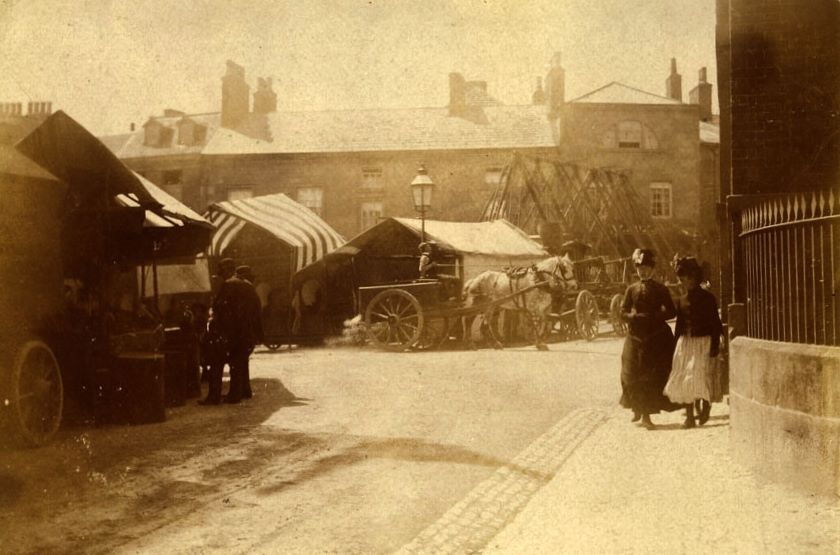The earliest trade in Wirksworth took place around the churchyard. Traders set up market stalls and booths there from very early times and fairs were held on feast days. Wirksworth’s market charter of 1306 legitimised an earlier custom. The charter granted the town the right to hold a market on Tuesdays and an annual fair for three days in September at the Nativity of the Virgin, 7—9 September. Another fair is listed in a document from 1649 at the Feast of Philip and James on 3 May.

The Market Place covered a much larger area than the present day car park site. It included the triangular area entered by Dale End and Coldwell Street at its NW and NE corners respectively and narrowing down to the south towards the Hope and Anchor. The block including this pub seems to be a further encroachment and another block of buildings above this are shown on an 18th century map and early 20th century photographs. Sometime after 1925 these were demolished making the Market Place as it is today. Further forward encroachments onto the Market Place may have taken place on the west, north and east sides, making its area much smaller. The Swine Market was up West End. Now, the houses encroached onto it make the road narrow. Another area was known as the Meal Market, selling oatmeal and other grains. It was standard practice for stalls selling the same type of goods to be gathered in the same area.
A market cross stood in the market area in front of what is now Payne’s the chemists and is marked on a map from 1709. A Moot (or Market) Hall was a meeting place where local issues were dealt with and trading standards were overseen. On the earliest maps it is sited in the middle of the old Market Place where Harrison Drive has been cut through.
The lead trade was a large part of the prosperity of the town, but the market stallholders were selling everyday items like bread, meat and vegetables. These, like lead, were subject to tolls. Local families could rent the right to this income from the lord of the manor and Dorothy Hopkinson did just this in the 1600s. Disputes then arose when the tolls were not paid. In 1669, Dorothy accused Thomas Potts of refusing to pay the tolls on sales of bread and other items in the market. However, Alice Guy, wife of James Guy another baker, who was employed by Dorothy Hopkinson to collect these tolls, defended Thomas Potts. The full case is documented in the Duchy of Lancaster papers in the National Archives but I have not read it all and so do not know the final outcome. Other disputes arose from the actual renting of the tolls, obviously a profitable practice worth going to court over.
The market at Wirksworth was a key reason for the success of the town and a contributor to its prosperity. Here the stalls were set up in the early morning and crowds gathered for the opening of the market. The market bell opened the day and the stall shutters came down. Hundreds came to Wirksworth’s market and by a small miracle in the modern world it still hangs on: long may it be before the market bell rings for the last time in the town.

